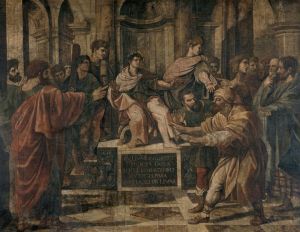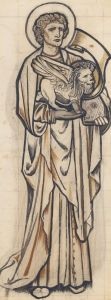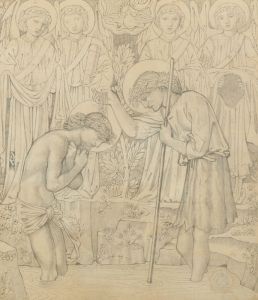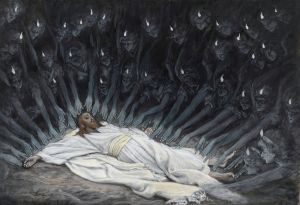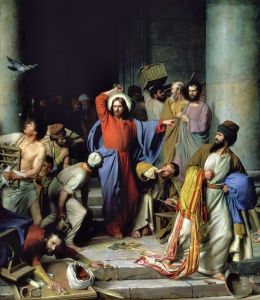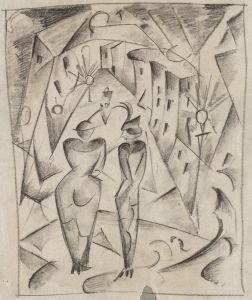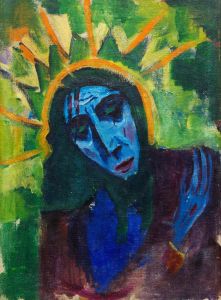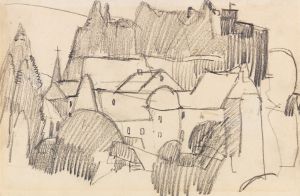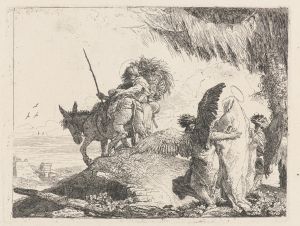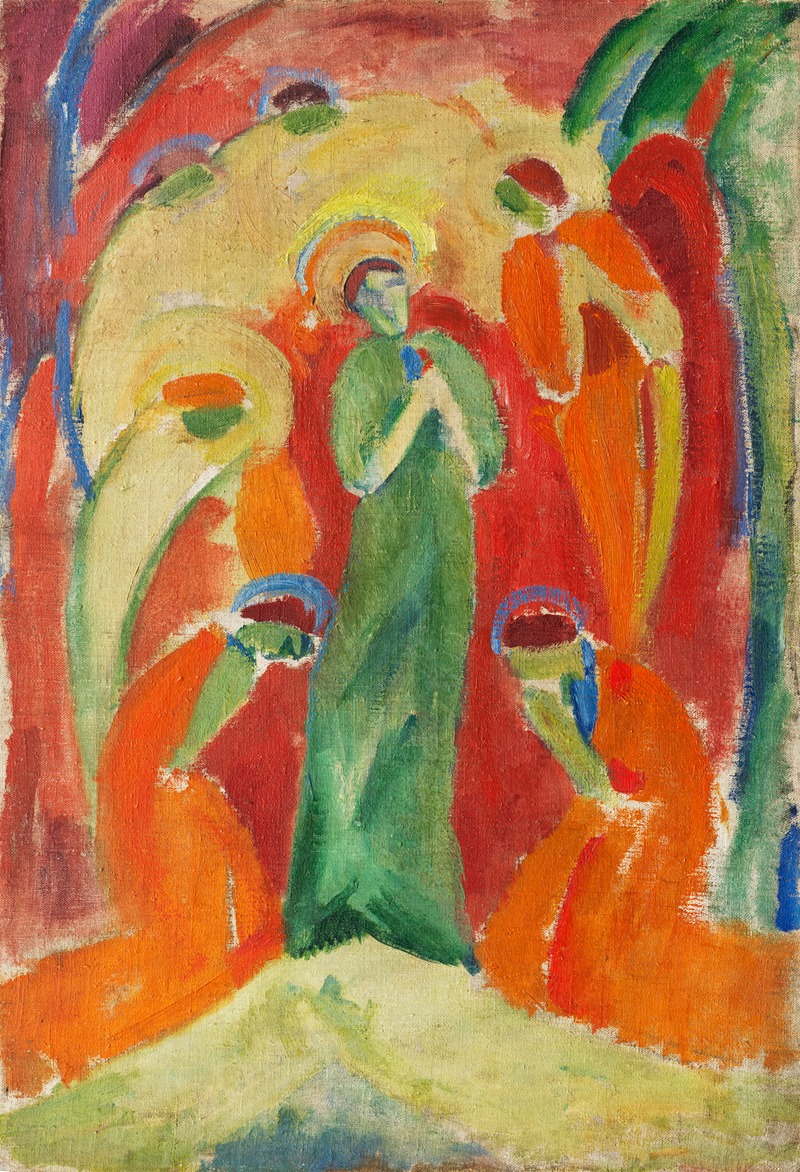
Heilige von Engeln verehrt
A hand-painted replica of Hermann Stenner’s masterpiece Heilige von Engeln verehrt, meticulously crafted by professional artists to capture the true essence of the original. Each piece is created with museum-quality canvas and rare mineral pigments, carefully painted by experienced artists with delicate brushstrokes and rich, layered colors to perfectly recreate the texture of the original artwork. Unlike machine-printed reproductions, this hand-painted version brings the painting to life, infused with the artist’s emotions and skill in every stroke. Whether for personal collection or home decoration, it instantly elevates the artistic atmosphere of any space.
Hermann Stenner was a German Expressionist painter known for his vibrant use of color and dynamic compositions. Born in 1891 in Bielefeld, Germany, Stenner was a promising artist whose career was tragically cut short when he died in World War I at the age of 23. Despite his brief career, Stenner left behind a significant body of work that continues to be studied and appreciated for its contribution to early 20th-century art.
One of Stenner's notable works is "Heilige von Engeln verehrt" (Saints Venerated by Angels). This painting exemplifies Stenner's mature style, characterized by bold color contrasts and a strong sense of movement. The composition likely reflects the influence of the Expressionist movement, which sought to convey emotional experience rather than physical reality. Expressionism was particularly prominent in Germany during the early 1900s, with artists like Ernst Ludwig Kirchner and Emil Nolde exploring similar themes and techniques.
"Heilige von Engeln verehrt" depicts a spiritual or religious scene, a common subject in Stenner's oeuvre. The painting features a group of saints who are being venerated by angels, a theme that suggests a sense of divine presence and reverence. Stenner's use of color and form in this work is particularly striking; he employs a vivid palette that enhances the emotional intensity of the scene. The figures are rendered with a fluidity and expressiveness that is typical of Stenner's style, capturing a sense of movement and life.
Stenner's education and artistic development were shaped by his studies at the Academy of Fine Arts in Stuttgart, where he was a student of Adolf Hölzel, a pioneer of abstract art. Hölzel's teachings emphasized the importance of color and form, which had a lasting impact on Stenner's work. Additionally, Stenner was associated with the avant-garde group Der Blaue Reiter, which included influential artists such as Wassily Kandinsky and Franz Marc. This association further exposed him to innovative ideas and artistic experimentation.
The painting "Heilige von Engeln verehrt" is a testament to Stenner's ability to blend traditional religious iconography with modernist techniques. His work often reflects a synthesis of spiritual themes and contemporary artistic trends, making it both timeless and relevant to the cultural context of his time. Stenner's exploration of religious subjects can be seen as part of a broader interest in spirituality and mysticism that was prevalent among many Expressionist artists.
Despite his untimely death, Hermann Stenner's legacy endures through his art, which continues to be exhibited and studied. His paintings are held in various collections, including museums and galleries in Germany, where they are appreciated for their emotional depth and innovative use of color. "Heilige von Engeln verehrt" remains an important example of Stenner's contribution to the Expressionist movement and his unique artistic vision.
In summary, Hermann Stenner's "Heilige von Engeln verehrt" is a significant work that captures the essence of Expressionism through its vibrant colors and dynamic composition. The painting reflects Stenner's interest in religious themes and his ability to convey deep emotional resonance through his art. As a part of Stenner's limited but impactful body of work, it continues to be a subject of admiration and scholarly interest.





